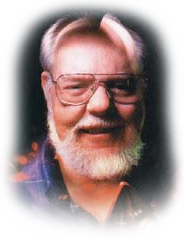Dave Arneson
| Dave Arneson | |
|---|---|
 |
|
| Born | David Lance Arneson October 1, 1947 Hennepin County, Minnesota, United States |
| Died | April 7, 2009 (aged 61) Saint Paul, Minnesota, United States |
| Occupation | Game designer |
| Nationality | American |
| Genre | Role-playing games |
| Spouse | Frankie Ann Morneau (1984 – April 7, 2009) |
David Lance "Dave" Arneson (October 1, 1947 – April 7, 2009) was an American game designer best known for co-developing the first published role-playing game (RPG), Dungeons & Dragons, with Gary Gygax, in the early 1970s. Arneson's early work was fundamental to the development of the genre, developing the concept of the RPG using devices now considered to be archetypical, such as adventuring in "dungeons", using a neutral judge, who doubles as the voice and consciousness of all other characters to develop the storyline.
Arneson discovered wargaming as a teenager in the 1960s, and began combining these games with the concept of role-playing. He was a University of Minnesota student when he met Gygax at the Gen Con gaming convention in the late 1960s. In 1970 Arneson created the game and fictional world that became Blackmoor, writing his own rules and basing the setting on medieval fantasy elements. Arneson showed the game to Gygax the following year, and the pair co-developed a set of rules that became Dungeons & Dragons (D&D). Gygax subsequently founded TSR, Inc. to publish the game in 1974. Arneson worked briefly for the company.
Arneson left TSR in 1976, and filed suit in 1979 to retain credits and royalties on the game. He continued to work as an independent game designer, briefly worked for TSR again in the 1980s, and continued to play games for his entire life. Arneson also did some work in computer programming, and taught computer game design and game rules design at Full Sail University from the 1990s until shortly before his death in 2009.
Arneson's role-playing game design work grew from his interest in wargames. His parents bought him the board wargame Gettysburg by Avalon Hill in the early 1960s. After Arneson taught his friends how to play, the group began to design their own games and tried out new ways to play existing games. Arneson was especially fond of naval wargames. Exposure to role-playing influenced his later game designs. In college history classes he role-played historical events, and preferred to deviate from recorded history in a manner similar to "what if" scenarios recreated in wargames.
...
Wikipedia
